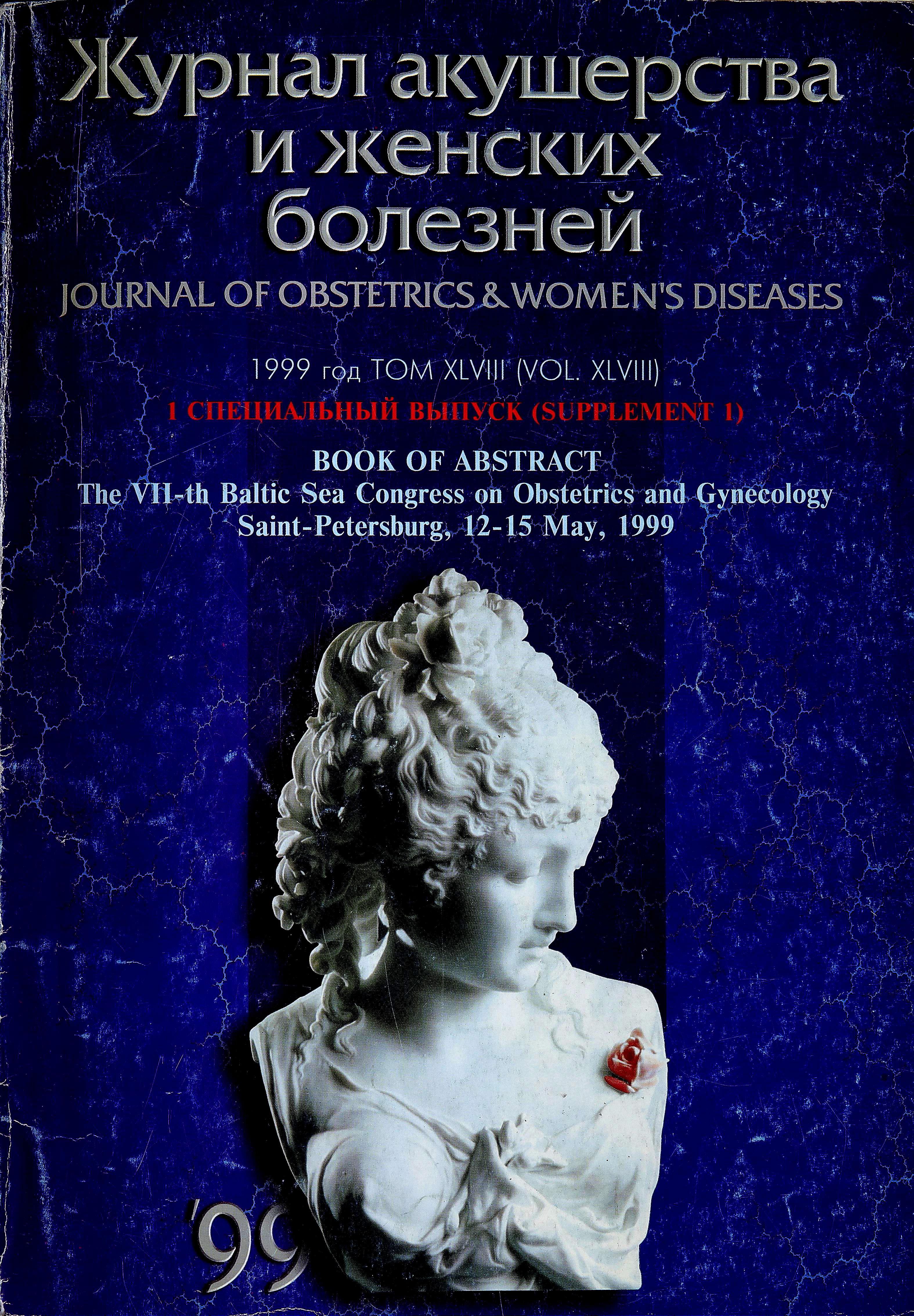Infection and preterm labor
- 作者: Nadisauskiene R.1, Vaitkiene D.1
-
隶属关系:
- Kaunas Medical University
- 期: 卷 48, 编号 5S (1999)
- 页面: 119-119
- 栏目: Articles
- ##submission.dateSubmitted##: 20.02.2022
- ##submission.dateAccepted##: 20.02.2022
- ##submission.datePublished##: 15.12.1999
- URL: https://journals.eco-vector.com/jowd/article/view/101266
- DOI: https://doi.org/10.17816/JOWD101266
- ID: 101266
如何引用文章
全文:
详细
Preterm birth is one of the greatest unsolved problems in modem obstetrics. It has been showed that intraamniotic infection (IAI) from microorganisms found in the lower genital tract are implicated both in the etiology and in the complications of preterm birth. In Lithuania this problem is particularly severe, since the prevalence of genital and particularly sexually transmitted diseases (STD) is high. At the Department of Obstetrics and Gynecology of Kaunas Medical University Hospital, a tertiary-care perinatal referral center, the studies on preterm labor and infection were performed during period 1992 - 1996.
全文:
Preterm birth is one of the greatest unsolved problems in modern obstetrics. It has been showed that intraamniotic infection (IAI) from microorganisms found in the lower genital tract are implicated both in the etiology and in the complications of preterm birth. In Lithuania this problem is particularly severe, since the prevalence of genital and particularly sexually transmitted diseases (STD) is high. At the Department of Obstetrics and Gynecology of Kaunas Medical University Hospital, a tertiary-care perinatal referral center, the studies on preterm labor and infection were performed during period 1992 - 1996. We have shown that IAI and vaginal carriage of C.trachomatis, E.coli, Staphylococcus aureus are associated with an increased risk of PROM-P. These associations remained valid after taking account of other obstetric and demographic variables namely marital status, neonatal sex, previous elective abortions. The presence of one or more of these conditions in late second or early third trimester may therefore be considered predictive of PROM. It was concluded that E.coli and S. aureus are significantly more prevalent in endocervical cultures from woman in preterm than from those in term labor. Our results demonstrate that in pregnancies with PROM-P cultures from the lower genital tract (endocervix) provide sensitive but nonspecific prediction of IAI. We suggest that clinical management of pregnancies with PROM-P should not rely only on the results of cultures of swabs from the lower genital tract. In our study we have shown that AF culture can identify patients with an increased risk of adverse maternal and neonatal outcome in patients with preterm PROM.
作者简介
R. Nadisauskiene
Kaunas Medical University
编辑信件的主要联系方式.
Email: info@eco-vector.com
立陶宛, Kaunas
D. Vaitkiene
Kaunas Medical University
Email: info@eco-vector.com
立陶宛, Kaunas
参考
补充文件





